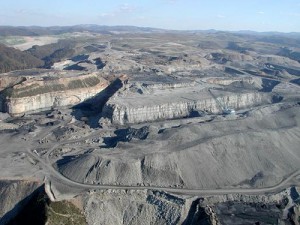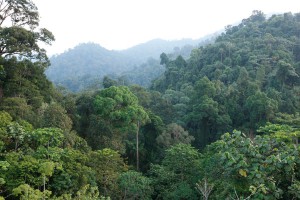Here in Copenhagen (Day 5, 5:00 PM), delegates from all over the world are not surprised that the U.S. is playing a disappointing role in the climate negotiations, after all the science calls for 40% emissions reduction below 1990 levels by 2020, and the U.S. climate legislation calls for only 4%. This past summer, RAN opposed the Waxman Markey bill in the House of Representatives for many reasons, the largest being the inclusion of 2 billion tons in carbon offsets. These are 2 billion tons of carbon that U.S. polluters do not have to stop emitting, a gaping loophole in our effort to thwart climate change that keeps us addicted to fossil fuels.

Half of those offsets were to be used for domestic sources from sectors whose emissions are not capped, particularly the agriculture and forest sectors. The other half, 1 billion tons of offsets, are to come from international sources. The two major potential source of carbon offsets internationally would be:
1) The Clean Development Mechanism (CDM) or a similar regime of reduced emissions projects from developing countries. The CDM is quite controversial, and exists under the Kyoto Protocol, which the U.S. did not sign onto, so these CDM-like projects would theoretically need to emerge from the new agreement now being negotiated in Copenhagen.
2) And the second source would be carbon credits from international forests. This regime is also being negotiated right now in Copenhagen, and its outcome will influence if not determine the future for forest protection in the coming decade. A strong REDD deal with good safeguards would mean forest protection and the rights of forest dependent people respected. A weak REDD deal without strong safeguards would allow the continued logging of the intact natural rainforests in countries like Indonesia, Papua New Guinea, Brazil, and the Democratic Republic of Congo.

America’s future appetite for forest carbon credits is just one reason why the U.S. is so keenly interested in REDD. Another, more urgent reason, comes from the allocation of pollution credits under the climate policy. In Waxman Markey, 5% of the total number of CO2 pollution credits will be auctioned to generate a fund for Supplemental Emissions Reductions from Reduced Deforestation. The hope is that this REDD fund would account for 10% the total emissions reduction goal of the United States.
It’s too early to tell how this legislation will play out in the Senate. The Democratic majority is still pushing for a climate bill, and it will not live up to the science-based standard of 40% or more emissions reduction below 1990 levels, in large part due to the entrenched lobbying by the fossil fuels industry. Ironically this may not be bad for non-U.S. forests which are seen by King Coal and Big Oil as a key ‘cost containment mechanism’. RAN supports the Supplemental Fund mechanism as a key means of protecting rainforests, and welcomes the U.S.’ role in the global effort to halt deforestation. But we cannot move forward without reducing our own emissions, and that’s why we oppose the offset mechanism, which uses forest offsets to let big coal and oil off the hook from making necessary emissions reductions.
Now in Copenhagen, we’re seeing the U.S. position vis a vis the Waxman Markey bill playing out. The U.S. opposes binding legal targets for emissions reductions – which we in essence do not have in the U.S. due to all of those offsets. But meanwhile, the U.S. is ready to go on REDD, due to the Supplemental Fund, the silver lining from an otherwise weak and compromised U.S. climate policy.